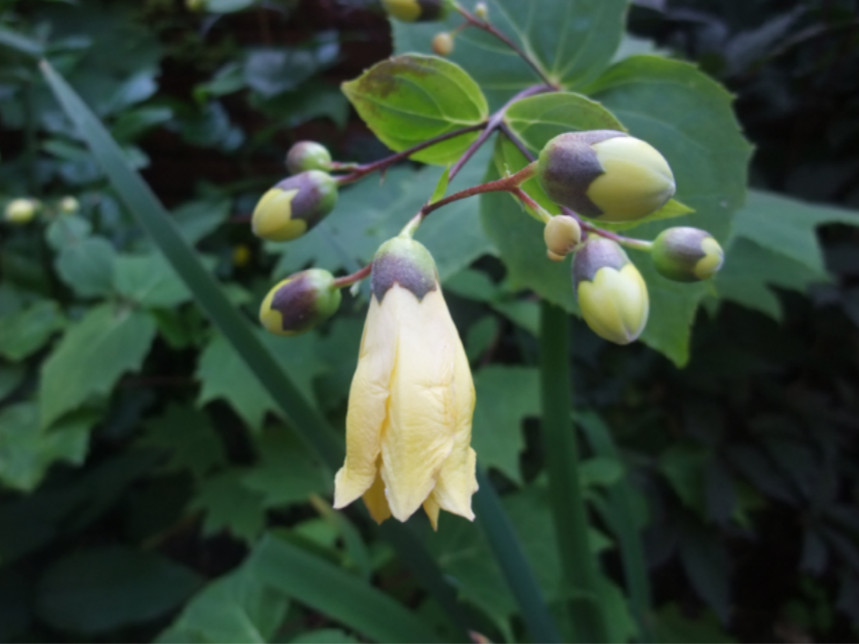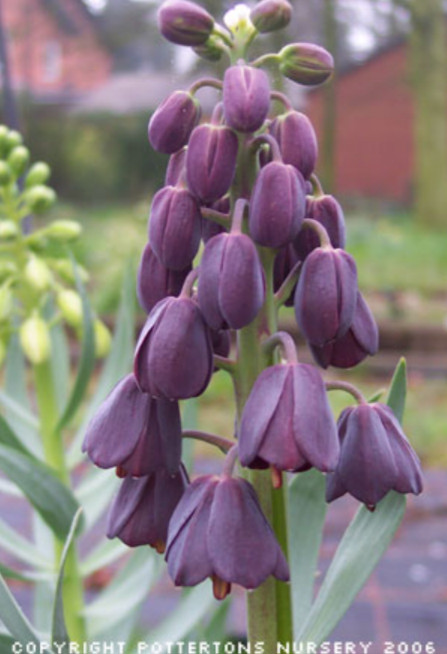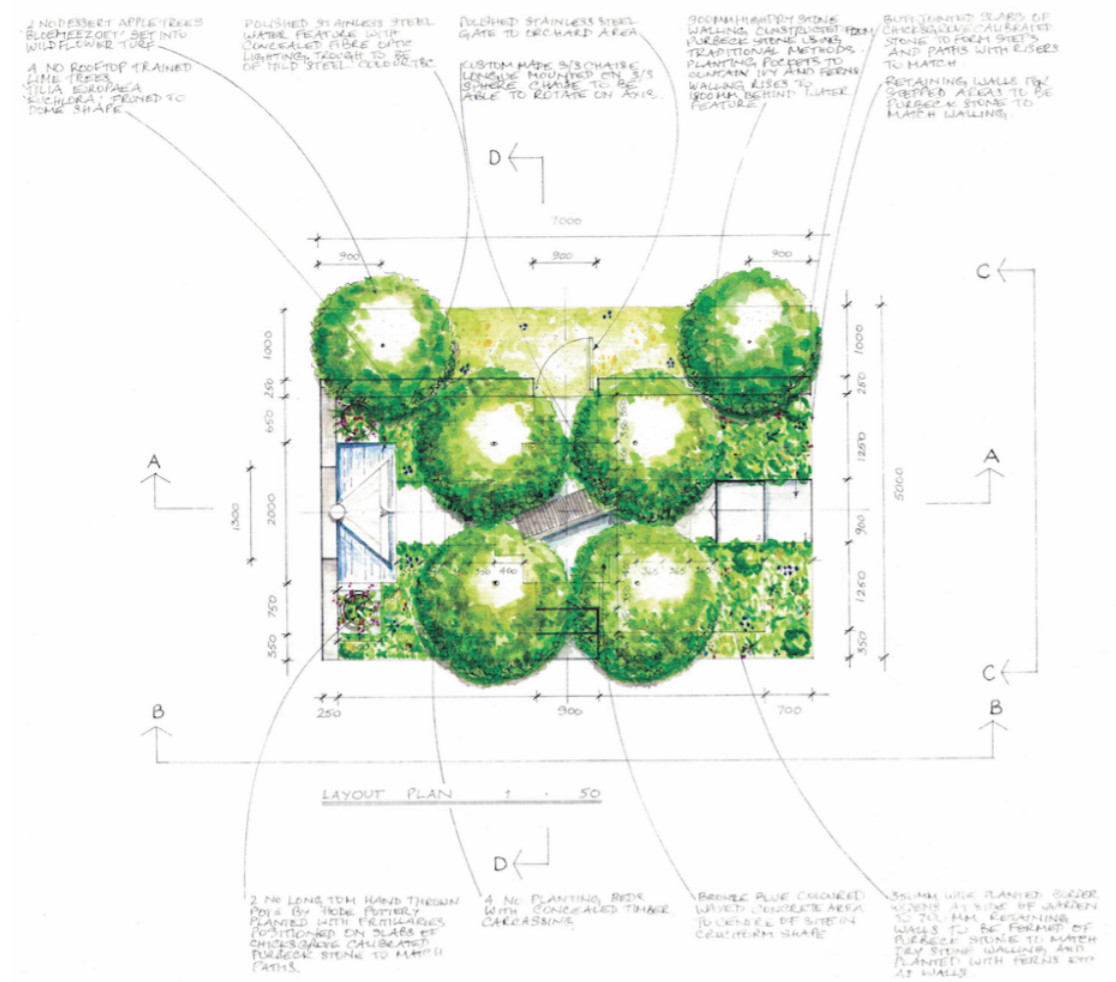Carefully Curated Plants for Poetry Lover’s Garden
When considering plants and trees for a show garden inspired by a poem entitled ‘This Lime Tree Bower my Prison’ the starting point would have to be the lime trees.
Garden designer Fiona Cadwallader personally selected her trees from renowned nursery Van den Berk in Eindhoven, Holland.
Chelsea veteran Dave Root of Kelways in Somerset is sourcing and growing her shrubs and herbaceous plant material. Mark Gregory’s Landform are the contractors of choice for the Poetry Lover’s Garden.
The four beautiful specimen Tilia x euchlora will not disappoint. This particular variety of lime is also known as the Caucasian or Crimean lime. Rooftop training with subsequent hand pruning creates a domed canopy of glossy heart-shaped leaves. It’s under such foliage that Coleridge was sitting when he described the feeling of summer and this particular section of the poem that captivated designer Fiona and inspired the garden design.
‘Pale beneath the blaze
Hung the transparent foliage; and I watch'd
Some broad and sunny leaf, and lov'd to see
The shadow of the leaf and stem above
Dappling its sunshine!’
The lime trees produce fragrant cream flowers much loved by bees but Fiona will also be planting other nectar-rich plants such as flowering broad beans.
‘the solitary humble-bee
Sings in the bean-flower!’
Other notable plants incorporated into the garden design are; Amsonia tabaernaemontana var.salicifolia much loved by the designer for the star shaped clusters of tiny pale blue flowers. It is a clump-former with willow-shaped leaves and subtly reflects the colour of an English sky in spring – the ‘wide wide Heaven’ of the poem.
Returning to the Caucasus region, Silene fimbriata thrives in the UK lightening up dry patches by walls and under trees. Its delicate fringed white bells each on a pale green calyx are not showy but bridge the gap between the meadow planting in the orchard section of the garden and the more cultivated appearance of the main beds.
No stranger to the Chelsea stage is Anchusa azurea ‘Loddon Royalist’, a brilliant herbaceous plant and member of the borage family. Known for the intense deep blue flowers, evocative of the sea Coleridge imagines his friends seeing on their coastal walk without him. Fiona is particularly keen on the contrasts between the rough hairy leaves and smooth bright petals, reminiscent of ‘The slip of smooth clear blue betwixt two Isles’.


Pittosporum ‘Irene Paterson’ is one of Fiona’s favourite compact shrubs. The new growth on ‘Irene Paterson’ is almost white and as it ages the delicate spots become more visible fading to a delicious pale green which shows well against the dark stems. The leaf variegation stands in for the ‘speckles’ cast by the sun of the poem.
Unable to achieve Coleridge’s ‘fronting elms’ Fiona has turned to ‘the ancient ivy’ which he describes and will be used on the dry stone walls of the garden. Hedera helix ‘Sagittifolia’ is a beautiful form with arrow-shaped leaves which will cascade elegantly on the low walls, giving the impression of a long-established garden.
Kirengeshoma palmata is a shade-loving perennial with large leaves and dark purplish stems which reference colours of the poem – the ‘ dark branches’ and ‘purple shadows’. This plant does not flower until late summer but the lemon yellow flowers are appropriate to the yellow of the setting sun Coleridge sees as his solitary day wears on.
The speckled leaves and sky blue flowers of Pulmonaria ‘Opal’ rhyme with the speckles of the Pittosporum and the Amsonia. Neat and delicate Alchemilla conjuncta is the perfect edging plant with finely cut leaves edged with a silvery line formed by the silky backing to the leaves.
Continuing the dappled theme is sky blue Geranium ‘Mrs Kendall Clark’. The cut leaves and sprawling habit will spill over the steps in keeping with the informal planting style which softens the symmetry of the layout.


Dark purple bell-flowered Fritillaria persica will be planted in the pots either side of the water feature and add structural mass and gentle movement to the planting. The bells are so dark they echo the ‘black wing’ of the rook flying over in the poem.


